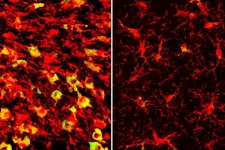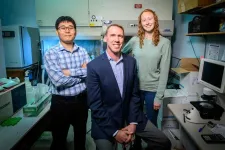In C. elegans, the protein SID1 plays a crucial role in the systemic RNA interference process by facilitating the transport of exogenous double-stranded RNA into the cytoplasm. Previously, Chen-Yu Zhang's group has already demonstrated that intact plant miRNA found in dietary sources can be absorbed through the mammalian digestive system and mediate cross-kingdom gene regulation. Mammalian SID-1 transmembrane family proteins, namely SIDT1 and SIDT2, have attracted considerable attention due to their role in facilitating the uptake of regulatory exogenous small RNAs, such as small interfering RNA (siRNA) and plant-derived microRNA (miRNA). Notably, studies using SIDT1-deficient (Sidt1−/−) mouse models have revealed that in gastric pit cells, SIDT1 facilitates the cellular uptake of dietary miRNAs. Although accumulating evidence shows the involvement of SID-1 transmembrane family proteins in mediating nucleic acid uptake, questions have persisted regarding the precise structural and molecular mechanisms underlying how these proteins enable the uptake of exogenous small RNAs, particularly in low-pH conditions.
In the present study, the researchers determined the cryo-EM structures of human SIDT1 and SIDT2, unveiling their overall architecture as dimers with remarkable structural congruence. Both the extracellular domains (ECDs) and transmembrane domains (TMDs) contribute to dimer formation. Notably, the study highlighted the existence of SIDT1 and SIDT2 in dimeric or higher-order oligomeric states, with the TMDs playing a critical role in maintaining these dimeric assemblies in situ. Furthermore, the ECDs of SIDT1 and SIDT2 can efficiently bind to small RNAs in a pH-dependent manner. Under acidic conditions, the ECDs exhibited increased binding affinity to small RNAs, which triggered the higher-order oligomerization of the ECDs. The significance of this study lies in unraveling the molecular basis of RNA uptake by SIDT1 and SIDT2. Understanding the pH-dependent RNA binding and oligomerization of SIDT1 and SIDT2 provides insights into their functional regulation, particularly in the acidic microenvironments where they are predominantly localized.
This work is important for the following reasons:
1. This study presents a comprehensive characterization of the architectural features of human SIDT1 and SIDT2, which exist as dimers in vitro and form dimers or higher-order oligomers in their natural environment.
2. ECDs of SIDT1 and SIDT2 can efficiently bind to small RNAs under acidic conditions, indicating a pH-dependent mechanism for RNA binding and uptake. This finding overturns previous claims that SIDT1ECD and SIDT2ECD can only bind longer double-stranded RNAs (>100 bp).
3. This study highlights the role of RNA in triggering ECD oligomerization under acidic conditions, shedding light on the potential importance of oligomerization in their RNA uptake process.
4. This study introduces a model where nucleic acid-induced oligomerization may form an RNA transport supercomplex involving other partners under low pH conditions.
"SID-1 transmembrane family proteins were first identified as nucleic acid transporters. The ECD regions, however, appear to function as novel nucleic acid binding proteins, raising the hypothesis that these proteins function as membrane-bound RNA binding proteins." Chen-Yu Zhang said. " Our study highlights the role of RNA in triggering ECD oligomerization under acidic conditions. Moreover, we propose that the phospholipase activity in the TMD might influence the fluidity of the cell membrane system, shedding light on the potential importance of oligomerization in the process of RNA uptake." Xiaoyun Ji added.
The researchers of this project include Le Zheng, Tingting Yang, Hangtian Guo, Chen Qi, Yuchi Lu, Haonan Xiao, Yan Gao, Yue Liu, Yixuan Yang, Mengru Zhou, Henry C. Nguyen, Yun Zhu, Fei Sun, Chen-Yu Zhang, Xiaoyun Ji, of National Key Laboratory of Pharmaceutical Biotechnology, School of Life Sciences, Chemistry and Biomedicine Innovation Center (ChemBIC), Institute of Artificial Intelligence Biomedicine, Nanjing University, National Key Laboratory of Biomacromolecules, CAS Center for Excellence in Biomacromolecules, Institute of Biophysics, Chinese Academy of Sciences, Beijing, University of Chinese Academy of Sciences, Beijing, Shanghai Institute for Advanced Immunochemical Studies and School of Life Science and Technology, ShanghaiTech University, Shanghai Clinical Research and Trial Center, Shanghai, Engineering Research Center of Protein and Peptide Medicine, Ministry of Education, China.
This work was supported by grants from the National Key Research and Development Program of China (2018YFA0507103), the National Natural Science Foundation of China (No.32270139), the Strategic Priority Research Program of the Chinese Academy of Sciences (XDB.37040102), the National Key Research and Development Program (2021YFA1301500), the National Natural Science Foundation of China (No.32071187), the National Key Research and Development Program (2019YFA0904101), the program for Innovative Talents and Entrepreneur in Jiangsu, and the Fundamental Research Funds for the Central Universities.
Zheng et al.: " Cryo-EM structures of human SID-1 transmembrane family proteins and implications for their low-pH-dependent RNA transport activity"
Publishing on Cell Research, November 06, 2023.
Author contact: Prof. Xiaoyun Ji (National Key Laboratory of Pharmaceutical Biotechnology, School of Life Sciences, Chemistry and Biomedicine Innovation Center (ChemBIC), Institute of Artificial Intelligence Biomedicine, Nanjing University, Nanjing, Jiangsu, Engineering Research Center of Protein and Peptide Medicine, Ministry of Education, China.) Tel: (86)-025-89681656 Email: xiaoyun.ji@nju.edu.cn
END


